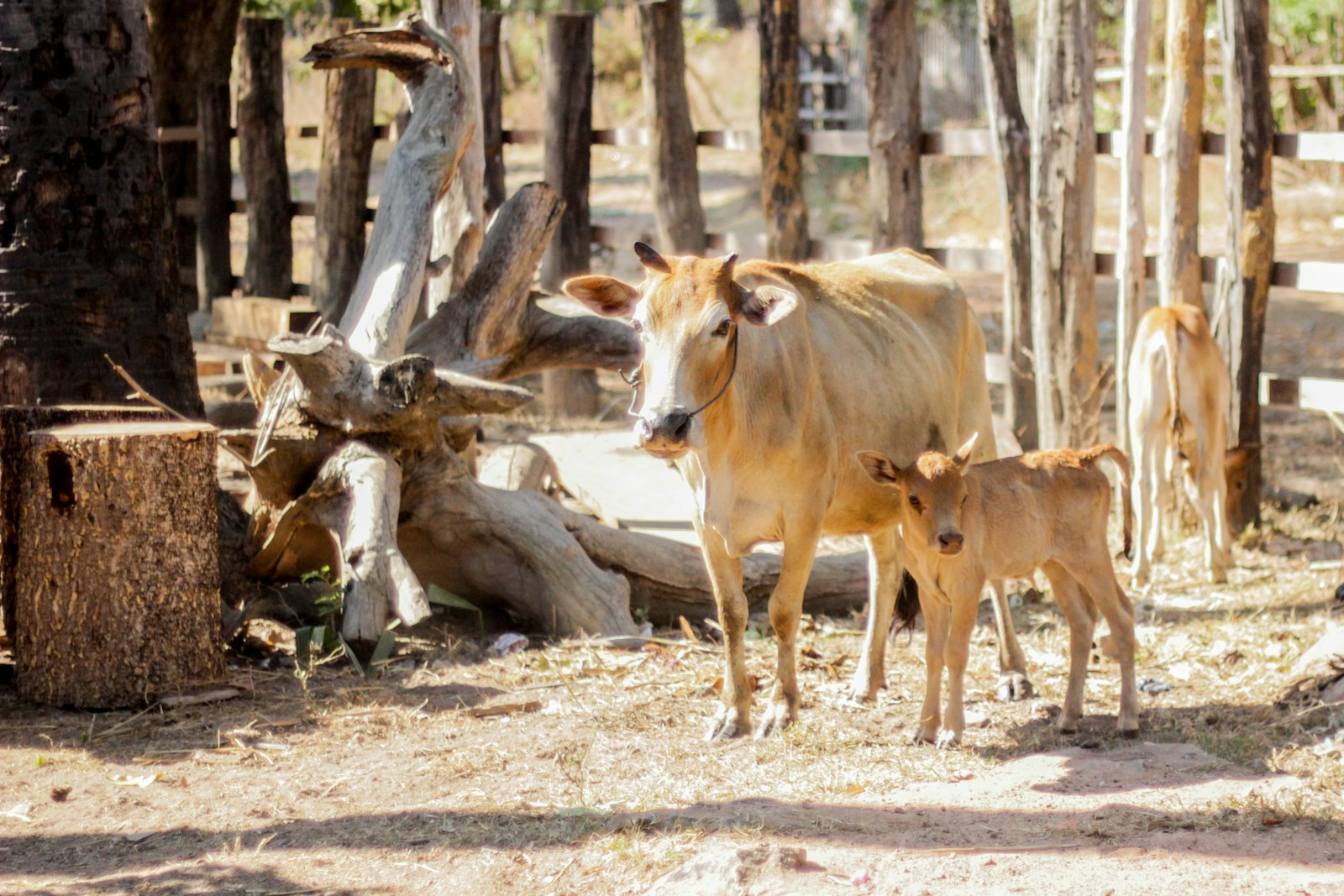
vaca

cow
Cows are large domesticated cloven-hoofed herbivores. They are a prominent modern member of the subfamily Bovinae, are the most widespread species of the genus Bos, and are most commonly classified collectively as Bos taurus.
Example sentences using: vaca
Mi vaca es blanca y grande.

My cow is white and big.
This sentence shows how you can describe an animal's appearance using adjectives like 'blanco' or 'grande' in Spanish. 'Mi' implies ownership of the cow.
La vaca es un animal.

The cow is an animal.
This sentence is a simple subject-verb-object statement in Spanish that asserts that a cow is a type of animal. 'La' is the definite feminine article equivalent to the English 'the', 'vaca' means cow, and 'es' is the third-person singular of 'ser', which signifies 'to be' in English.
¿Has visto mi vaca?

Have you seen my cow?
This sentence is using the present perfect tense to ask if the listener has seen the speaker's cow. Note how the pronoun 'mi' is used to denote possession of the cow.
La vaca está en el campo.

The cow is in the field.
This sentence is using the verb 'está' to describe the location of the cow. In this case, 'el campo' translates directly to 'the field'.
Le gusta la leche de vaca.

He likes cow's milk.
This sentence is expressing liking for something using 'le gusta'. Here, 'leche de vaca' is used to denote cow's milk.
La vaca tiene un becerro.

The cow has a calf.
This sentence is showcasing the use of 'tiene' to express possession for animals. 'Un becerro' means a calf in Spanish.
El color de la vaca es marrón.

The color of the cow is brown.
This sentence is structured to assert the color of an object. 'El color de la vaca' translates to 'the color of the cow'. 'Marrón' is the Spanish term for brown.
Vamos a comer carne de vaca.

We are going to eat beef.
'Vamos a' is used to talk about future actions, conveying 'we are going to'. 'Carne de vaca' is a way to say beef in Spanish, referring to cow meat.
Quiero una vaca como mascota.

I want a cow as a pet.
This sentence uses 'quiero' to express desire or wish. 'Como mascota' directly translates to 'as pet', which forms the context of wanting a cow as a pet.
El niño dibuja una vaca.

The boy is drawing a cow.
This sentence uses 'dibuja' the third person singular of the verb 'dibujar' which means 'draw'. 'El niño' refers to 'the boy' in Spanish.
La vaca da leche.

The cow gives milk.
In this sentence, we are stating a fact about cows which is — 'they provide milk'. Here, 'da' is the third-person singular of 'dar', meaning to give.
La vaca tiene manchas.

The cow has spots.
In this sentence, we are talking about a physical characteristic of a cow specifically that it has spots. 'Tiene' is the third-person form of 'tener', meaning to have.
Me gusta la vaca.

I like the cow.
In this sentence, 'Me gusta' translates directly to 'It pleases me'. However, it is more commonly understood as 'I like'. So, 'Me gusta la vaca' means 'I like the cow'.
La vaca es grande.

The cow is big.
This sentence describes the size of the cow, with 'grande' translating to 'big' in English. So, 'La vaca es grande' translates to 'The cow is big'.
La vaca come pasto.

The cow eats grass.
This is another simple sentence that states one of the habits of the cow - eating grass. 'Come' is the third-person singular of 'comer', which means 'to eat'.
La vaca vive en la granja.

The cow lives on the farm.
Here, 'vive' translates to 'lives', 'en' to 'on' and 'la granja' to 'the farm'. So, the whole phrase means 'The cow lives on the farm'.
La vaca es blanca y negra.

The cow is white and black.
This sentence describes the color of the cow. The conjunction 'y' is used to implement 'and' in English.
La vaca da carne y cuero.

The cow gives meat and leather.
In this sentence, we talk about some of the products we get from a cow — meat and leather. The conjunction 'y' is used for 'and' in English.
La mujer viste una camisa con un estampado de vaca.

The woman is wearing a shirt with a cow print.
This is a more complex sentence that describes what a woman is wearing. Here, 'viste' means 'is wearing', 'una camisa' means 'a shirt', and 'con un estampado de vaca' means 'with a cow print'.